-
Climate change adaptation – from local initiatives to national policies
We all know that the climate is changing, but how can we best prepare for some of the changes that lie ahead? Should coastal cities change their building codes to accommodate rising sea levels? Should we allocate more resources to tree-planting to reduce urban heat islands? These are examples of local initiatives that can make a difference to climate change adaptation. Indeed, climate adaptation is a rapidly growing concern for the international community.
-
-
Microwave absorber may advance radar cloaking for stealth missions

Microwave absorbers are a kind of material that can effectively absorb incident microwave energy to make objects invisible to radar; therefore they are commonly used in aircraft cloaking and warship stealth. Recently, as radar detection devices have been improved to detect the near-meter microwave length regime, scientists are working on high-performance absorbers that can cloak objects in the equivalent ultra-high frequency regime (from 300 megahertz to two gigahertz). Conventional absorbers for the ultra-high regime, however, are usually thick, heavy, or have narrow absorption bandwidth, making them unsuitable for stealth missions. To solve this problem, researchers have developed an ultra-thin, tunable broadband microwave absorber for ultra-high frequency applications.
-
-
Human-caused climate change increased severity of many extreme events in 2014
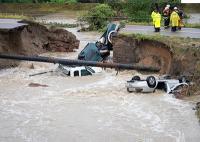
Human activities, such as greenhouse gas emissions and land use, influenced specific extreme weather and climate events in 2014, including tropical cyclones in the central Pacific, heavy rainfall in Europe, drought in East Africa, and stifling heat waves in Australia, Asia, and South America, according to a new report released the other day. The report, Explaining Extreme Events of 2014 from a Climate Perspective, published by the Bulletin of the American Meteorological Society, addresses the natural and human causes of individual extreme events from around the world in 2014, including Antarctica.
-
-
Global temperatures set to reach 1 °C marker for first time
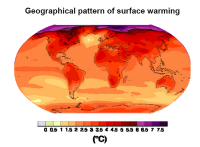
Met Office, the U.K. official weather service, says that data for 2015 so far shows that, for the first time, global mean temperature at the Earth’s surface is set to reach 1 °C above pre-industrial levels. This represents an important marker as the world continues to warm due to human influence. It is estimated that up to 2,900 Gigatonnes of CO2 (GtCO2) can be emitted to have a likely (more than 66 percent) chance of limiting warming to below 2 °C. The Met Office notes that as of 2014, about 2,000 GtCO2 had already been emitted, meaning society has used about two thirds of the 2 °C budget. This gives an indication that we are already committed to some level of further warming.
-
-
Solving the problem of “concrete disease”
When bridges, dam walls, and other structures made of concrete are streaked with dark cracks after a few decades, the culprit is AAR: the alkali-aggregate reaction. Also called the “concrete disease,” or even “concrete cancer,” it is a chemical reaction between substances contained in the material and moisture seeping in from outside. AAR damages concrete structures all over the world and makes complex renovations or reconstructions necessary. Researchers have now solved the structure of the material produced in the course of AAR at atomic level — and have thereby discovered a previously unknown crystalline arrangement of the atoms.
-
-
Game for climate adaptation
An MIT-led project takes the adage “think globally, act locally” to heart by demonstrated a new method for getting local citizens and leaders to agree on the best ways of managing the immediate and long-term effects of climate change. The project got local citizens and officials in four coastal towns to engage in role-playing games about climate change tailored to their communities — which in coastal communities may include rising sea levels and increased storm surges that can lead to flooding.
-
-
DHS S&T-funded technology protects devices from cyberattacks
In 2011, a small group of university researchers working on securing embedded devices caught the attention of the Department of Homeland Security (DHS) Science and Technology Directorate (S&T). That effort has since evolved into a one-of-a-kind technology — called Symbiote — which Hewlett-Packard (HP) recently licensed from Red Balloon Security, to protect its printers from cyberattacks.
-
-
In the world of finance, consideration of climate change is now mainstream
As climate changes become impossible to dismiss, how does the mainstream investor community respond? Are financial decisions taking full account of risks and opportunities related to climate change, or is the topic still virtually ignored in financial decision-making?
-
-
Blitz spirit needed to meet challenges like climate change: Dr. Hugh Hunt
Today’s engineers will need the kind of drive and determination shown by the great wartime innovators such as Sir Barnes Wallis and Sir Frank Whittle if they are to respond effectively to challenges such as climate change, Dr. Hugh Hunt told the Royal Academy of Engineering on Tuesday. Hunt compared today’s challenge of adapting to future climate change with the imperative to develop new technologies to tip the balance of military capability in favor of the Allies during the Second World War.
-
-
Self-healing concrete being tested
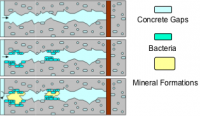
At present, billions of pounds are spent every year maintaining, fixing, and restoring structures such as bridges, buildings, tunnels, and roads. It is estimated that around £40 billion a year is spent in the United Kingdom on the repair and maintenance of structures, the majority of which are made from concrete. Researchers are testing three separate concrete-healing technologies for the first time in real-world settings, with a view to incorporating them into a single system that could be used to automatically repair concrete in the built environment.
-
-
Update issued for southeast Florida regional sea level rise projections
The four-county Southeast Florida Regional Climate Change Compact (Compact) has prepared an update to the regional sea level rise projections used for important planning purposes. Overall, the update includes minor changes to the short-term curves, but a more significant increase in the mid-and long-term projections. The 2015 update estimates sea level rise of 6 to 10 inches by 2030, or 3 to 5 inches above average sea level in 2015. Predictions for the mid-term are between 11 and 22 inches of additional sea level rise by 2060, and longer-term between 28 and 57 inches by 2100.
-
-
New York proposes new sea-level rise projection regulations
New York State Department of Environmental Conservation (DEC) announced last week that to better prepare New York State coastal communities and business owners for extreme weather events like Superstorm Sandy three years ago, DEC is proposing new state sea-level rise projections which will help state agencies and project planners develop more resilient structures. “The sea-level rise projections DEC is proposing today reflect the best science available,” said DEC acting commissioner. “Sea level projections will help state agencies, developers, planners and engineers to reduce risks posed by rising seas and coastal storms over the next several decades.”
-
-
NSF highlights more than forty years of supporting cybersecurity research and education

New report highlights NSF-funded cybersecurity research and education. Today, NSF invests nearly $160 million each year in interdisciplinary research, education, and workforce development help protect national and personal security. This support helps scientists develop the tools, training, and people that will keep the nation safe and maintain online privacy.
-
-
California releases plan for preparing the state for extreme effects of climate change
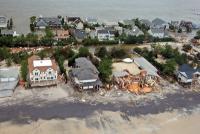
In response to a directive from California governor Edmund G. Brown Jr., the California Natural Resources Agency has been seeking public comment on a draft plan for how California will prepare for and adapt to the catastrophic effects of climate change, including extended droughts and wildfires, rising sea levels and increasingly extreme weather. The draft plan — Safeguarding California: Implementation Action Plans — identifies the state’s vulnerabilities to climate change and details steps that need to be taken across ten sectors including water, transportation, agriculture, biodiversity and habitat, emergency management, and energy.
-
-
Wildfires may double erosion across a quarter of western U.S. watersheds by 2050
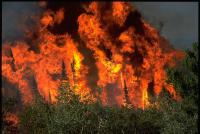
Wildfires, which are on the rise throughout the west as a result of prolonged drought and climate change, can alter soil properties and make it more vulnerable to erosion. A new study shows that the increase in wildfires may double soil erosion in some western United States by 2050, and all that dirt ends up in streams, clogging creeks and degrading water quality.
-
More headlines
The long view
Autonomous Vehicle Technology Vulnerable to Road Object Spoofing and Vanishing Attacks
Researchers have demonstrated the potentially hazardous vulnerabilities associated with the technology called LiDAR, or Light Detection and Ranging, many autonomous vehicles use to navigate streets, roads and highways. The researchers have shown how to use lasers to fool LiDAR into “seeing” objects that are not present and missing those that are – deficiencies that can cause unwarranted and unsafe braking or collisions.
Tantalizing Method to Study Cyberdeterrence
Tantalus is unlike most war games because it is experimental instead of experiential — the immersive game differs by overlapping scientific rigor and quantitative assessment methods with the experimental sciences, and experimental war gaming provides insightful data for real-world cyberattacks.
Prototype Self-Service Screening System Unveiled
TSA and DHS S&T unveiled a prototype checkpoint technology, the self-service screening system, at Harry Reid International Airport (LAS) in Las Vegas, NV. The aim is to provide a near self-sufficient passenger screening process while enabling passengers to directly receive on-person alarm information and allow for the passenger self-resolution of those alarms.
Falling Space Debris: How High Is the Risk I'll Get Hit?
An International Space Station battery fell back to Earth and, luckily, splashed down harmlessly in the Atlantic. Should we have worried? Space debris reenters our atmosphere every week.
Testing Cutting-Edge Counter-Drone Technology
Drones have many positive applications, bad actors can use them for nefarious purposes. Two recent field demonstrations brought government, academia, and industry together to evaluate innovative counter-unmanned aircraft systems.
Strengthening the Grid’s ‘Backbone’ with Hydropower
Argonne-led studies investigate how hydropower could help add more clean energy to the grid, how it generates value as grids add more renewable energy, and how liner technology can improve hydropower efficiency.
